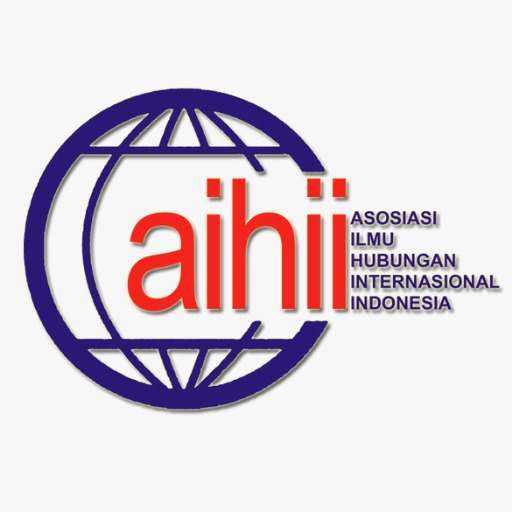Belt Road Initiatives (BRI): Intensi Tiongkok Sebagai Supremasi di Samudra Hindia dan Respon Counterbalance dari India
Downloads
Samudra Hindia dan region sekitarnya merupakan lokasi strategis yang menarik banyak peminat, tidak terkecuali bagi India dan Tiongkok. Kedua negara ini memiliki persaingan yang didasari atas keinginan untuk menjadi hegemon penyebar pengaruh budaya, politik, ekonomi, hingga militer di perairan ini. Persaingan ini kian menguat semenjak Tiongkok menginisiasikan Belt and Road Initiatives (BRI) yang dipandang India sebagai strategi komprehensif untuk kian mengabsahkan presensi hegemon Tiongkok di wilayah yang di klaim India sebagai tanggung jawabnya. India menanggapi pula dengan berkooperasi beserta kompetitor Tiongkok, layaknya Korea Selatan dan Jepang, untuk menandingi inisiatif ambisius Tiongkok tersebut. Namun, setelah dikaji, sejatinya India dan Tiongkok mengesampingkan rivalitas tersebut demi mewujudkan urgensi dari kepentingan nasional lain yang sama pentingnya Oleh karenanya, tulisan ini akan membahas mulai dari nilai strategis Samudra Hindia, analisis teori, definisi dan trajektori BRI oleh Tiongkok, persepsi India sesungguhnya terhadap BRI, respon counterbalance yang dilakukan India, dan rekomendasi tindakan yang seharusnya dilakukan oleh kedua negara ini
Baker McKenzie, 2017. Belt & Road: Opportunity and Risk. The Prospects and Perils of Building China's New Silk Road.Hong Kong: Silk Road Associates.
Wagner, Christian, & Therapathi, Siddharth, 2018. India's Response to the Chinese Belt and Road Initiative. Germany: SWP Comments.
Chibber, Ajay, 2017. "China's Belt and Road Initiatives: Competitive Cooperation”, Journal of Infrastructure, Policy & Development, Vol. 1 (2).
Jacob, Jabin T., 2017. "China's Belt and Road Initiatives: Perspectives from India”, China & World Economy, Vol. 25 (5).
Karim, Mohd Aminul, 2017. "21st Century Maritime Power-Politics in the Indian Ocean Region with Special Reference to the Bay of Bengal”, dalam Pacific Focus: Inha Journal of International Studies, Vol. XXXII (1).
Kurlantzick, Joshua, 2018. China's Risky Play for Global Power. [Online] Tersedia dalam: https://washingtonmonthly.com/magazine/september-october-2018/chinas-risky-play-for-global-power/ [diakses 21 September 2018].
Mishra, Vivek, 2018. China is Moving into the Indian Ocean [Online] Tersedia dalam: https://nationalinterest.org/feature/china-moving-the-indian-ocean-25380 [diakses 20 September 2018].
Palit, Amitnendu, 2017. The Maritime Silk Road Initiatives: Why India is Worried, What China Can Do [Online] Tersedia dalam: https://www.globalpolicyjournal.com/blog/31/05/2017/maritime-silk-road-initiative-msri-why-india-worried-what-china-can-do [diakses 21 September 2018].
Shepard, Wade, 2017. India and Japan Join Forces to Counter China and Build Their Own New Silk Road [Online] Tersedia dalam: https://www.forbes.com/sites/wadeshepard/2017/07/31/india-and-japan-join-forces-to-counter-china-and-build-their-own-new-silk-road/#f2e14514982c [diakses 21 September 2018].
The Rising Nepal, t.t. South Asia and BRI. [Online] Tersedia dalam: http://therisingnepal.org.np/news/20650 [diakses 21 September 2018].
Saxena, Antra, 2017. India's Policy Towards the Indian Ocean: A Study of Traditional and Non-Traditional Security Concerns. Phd. Deemed University.
- Authors retain the copyright of their article without restrictions and grant the journal right of first publication with the work simultaneously licensed under a Creative Commons Attribution License that allows others to share the work with an acknowledgment of the work's authorship and initial publication in this journal
- Authors are able to enter into separate, additional contractual arrangements for the non-exclusive distribution of the journal's published version of the work, with the condition that it is not intended for commercial purposes, and cite an acknowledgment of its initial publication in this journal.
- Authors are permitted and encouraged to post their work online (e.g., in institutional repositories or on their website) prior to and during the submission process, as it can lead to productive exchanges, as well as earlier and greater citation of published work (See The Effect of Open Access). However, authors are not allowed to share their work with other journals or publishers as it may lead to conflicting publication processes.

This work is licensed under a Creative Commons Attribution-NonCommercial-ShareAlike 4.0 International License.














